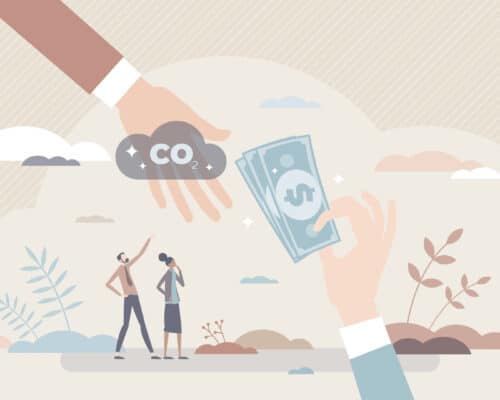Australia: Carbon Emissions, Pacific Island Nations and COP27
Photo by Justin McKinney via ShutterStock
03 November 2022 – by Heba Hashem Comments (0)
Despite being one of the world’s largest carbon emitters per capita, Australia has failed to take sufficient climate action throughout the decades. While it has made good progress prior to COP27 2022, the country is still opening up land for gas exploration.
At the same time, Australia continues to export fossil fuels and depends domestically on polluting fuels instead of renewable energy. Official statistics of Australian government show that fossil fuels contributed to 71% of Australia’s electricity generation in 2021. Of this mix, coal accounted for 51%, with natural gas and oil contributing 18% and 2%, respectively.
Australia’s Greenhouse Gas Emissions Devastating the Pacific Islands
Australia has repeatedly said it was supporting the Pacific countries in tackling climate change. But, its actions have proven otherwise.
Oxfam’s analysis found that each Australian has produced eight times more carbon emissions a year than a Pacific Islander since 2015. Yet, the Pacific’s fragile islands are experiencing the full force of the climate emergency.
Northern Vanuatu, for example, suffered a cyclone in 2020 that resulted in more than USD 500 million in losses and damage. But, development aid for recovery was less than USD 100 million, according to the Alliance of Small Island States (AOSIS).
In the Cook Islands, cyclones and rising temperatures are damaging crops and decreasing water availability. As a result, islanders are being forced to leave their homes and livelihoods behind.
Meanwhile, Tuvalu is threatened by sea level rise, while groundwater is no longer drinkable and saltwater intrusion is damaging crops. The loss of land on the island is beyond adaptation efforts, according to AOSIS.
Carbon Emissions in Australia Unlikely to Decrease
Australia has promised to take stronger action on climate change under the new Labour government. Additionally, Foreign Minister Penny Wong recently announced investments for the Pacific that include AUD 900 million over four years from 2022-23. The investments will support the Pacific region’s development and resilience.
The Pacific Elders’ Voice group has acknowledged the Albanese government’s more proactive stance on climate change. Former President of Kiribati Anote Tong and former President of Palau Thomas Esang Remengesau described the administration as a “breath of fresh air” for relations with the Pacific.
“But we need Australia to stop digging up, exporting and burning fossil fuels and become a global climate leader. This will help save all members of the Pacific family, including Australia,” the former presidents said in a joint statement.
While the new government pledged to take Australia in a new direction, its stance on fossil fuels seems unchanged. For instance, it recently launched its first offshore petroleum exploration permits for 2022. These opened up nearly 47,000 square kilometres of space for polluting activity.
Australia now has 114 new fossil fuel projects in the pipeline, containing more than double the amount of its current emissions.
“Every announcement for new oil and gas exploration or export feels like a nail in the coffin for the survival of our lands, our people and our culture,” the Pacific Island leaders said. Similarly, Fiji’s prime minister Frank Bainimarama said the survival of every Pacific Island urgently requires that Australia ends its “fossil fuel addiction”.
Australia’s Net-Zero Target Needs to be Backed by Action
Australia has already increased its emissions reductions target to 43% by 2030 from the previous 26% to 28%. It also plans to reduce greenhouse gas emissions and achieve net-zero emissions by 2050.
However, the new target is not based on climate science. It is consistent with higher than two degrees of global warming, according to Mr. Tong and Mr. Remengesau. “This makes it incompatible with the Paris Agreement targets and a death sentence for the coral reefs and oceans of the Pacific,” the Pacific Island leaders said.
Climate Finance
Climate finance is another area where the country is falling behind. Australia was among the developed countries that agreed to mobilise USD 100 billion per year to support vulnerable communities in their response to climate change. But in 2018, it stepped back from this pledge to pursue its own bilateral climate finance programs.
Furthermore, a new study found that the country has been funding one-tenth of its global fair share towards climate finance. It found that Australia’s contributions averaged only AUD 400 million a year between 2020 and 2025.
Australia at COP27 2022 – Egypt
Australia will likely seek to restore its reputation at COP27, which will take place in Sharm El Sheikh, Egypt, from 6-18 November, after passing its first climate change legislation. However, Prime Minister Anthony Albanese has confirmed he won’t be attending COP27. Instead, Climate Change and Energy Minister Chris Bowen will be going.
Australia’s Carbon Dioxide Emissions and Greenhouse Gases Are Pushing Pacific Neighbours Away
Pacific Island nations are now pressuring Australia to do more, especially as it looks to co-host COP29 with its neighbours. While the plan initially received support from Pacific state leaders, this is quickly changing.
Mr. Tong recently said it would appear contradictory if Australia wanted to host the summit in 2024 with the Pacific while it was significantly contributing to emission levels. Kiribati’s former president said he would be hesitant to support the country’s bid while it continues to open coal mines.
Australia will clearly have to turn words into action if it is to regain its standing in the Pacific and on the global stage. Perhaps, increasing its climate finance contributions to developing nations would be a good place to start.




